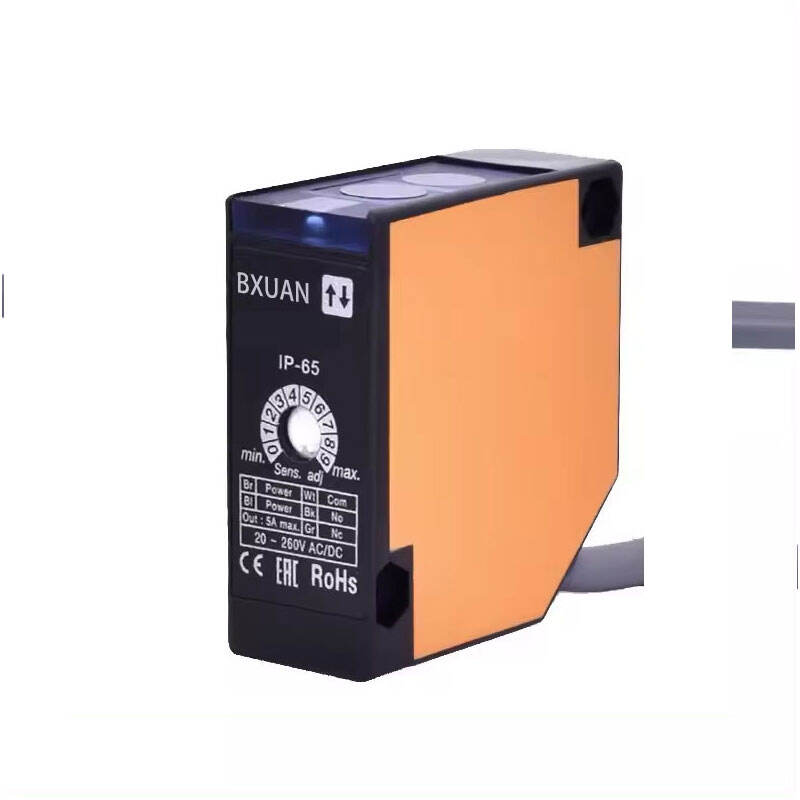Introduction
In industrial automation, it is necessary to have the Proximity switch for better operation of machinery and processes. A proximity switch or sensor device that detects the presence of objects nearby without any physical contact. It is widely used as a means to improve efficiency, secure people and Products as they move through the process, measurement tool in diverse number of applications. This article will introduce different kinds of proximity switches and their operating principles--brought into service on industry after being developed by people from various backgrounds with varying insights.
Types of Proximity Switches
There are four main broad classifications of proximity switches, each with its own features and applications:
A.Inductive Proximity Switches
The design principles of inductive proximity switches are based on electromagnetic induction. These switches are sensitive to metal and lubricants, thus they operate with the utmost dependability in rugged industrial environments. Dust, dirt, and humidity can not penetrate them, making inductive contacts the logical choice for use in manufacturing lines as well as packaging and assembly stations.
1. Principle of Operation: An inductive switch generates an electromagnetic field which changes when a metallic object enters its detection range. This change activates a relay, notifying the detection.
2. Advantages and Disadvantages: Inductive switches are robust, resistant to environmental influences and have a long operation life. However, they will only detect ferrous metals and are not suited for non-metallic material.
Typical Applications: They are commonly used for detecting metal in industrial safety machines, counting objects on a conveyor belt, and initiating automated processes.
B. Capacitive Proximity Switches
Capacitive proximity switches work by detecting changes in capacitance that are triggered by the presence of an object. They can sense a wide range of materials, including metals or liquids (in some cases even people's hands).
1. Principle of Operation: A capacitive switch is virtually always made up of a face capactored against the object being sensed. When that object is close by, the capacitance changes and the switch goes off.
2. Advantages and Disadvantages: These switches are sensitive to many materials but suffer from problems like humidity and temperature changes.
3. Typical Applications: Capacitive switches are used for liquid level detection, non-metallic material detection, and where hygiene is especially important. For example in the food and pharmaceutical industries.
C. Photoelectric Proximity Switches
Photoelectic switches use light to detect objects. They send out a beam of light which when broken by an object sends a signal back that is translated into action.
1. Principle of Operation: The switch sends out a light beam and a receiver catches the light. If an object breaks the beam, though, the receiver will be notified of a change and the switch will come on.
2. Advantages and Disadvantages: Photoelectric switches are highly accurate and can identify many different sorts of material, including clear or colored things. However they are subject to strong ambient light and need a clear field of vision.
3. Typical Applications: They are used widely in detection of object presence, color sorting packaging and for automatic material handling systems.
D. Ultrasonic Proximity Switches
Ultrasonic proximity switches work using sound waves to detect objects. They are particularly valuable in environments where visibility is poor or the surface of the object is not regular.
1. Principle of Operation: The ultrasonic wave is sent out and the switch catches the echo coming back from an object. The time taken for the echo to return decides how far away that object is.
2. Advantages and Disadvantages: These switches can detect objects through barriers or in environments with poor visibility. But they are subject to noise interference and temperature variation.
3. Typical Applications: Ultrasonic switches are used to measure distances, detect the liquid level in tanks and in robotics for obstacle avoidance.
E. Hall Effect Proximity Switches
Hall Effect switches are devices that sense magnetic fields. They can be used to determine the presence of magnetic objects, or whether there is something ferrous. Perhaps you don't want a car park sign saying 'Examine gas without turning engine off' where people have escaped from all the cars in the lot to escape what they think is a chlorine gas leak; And they certainly should not be used in clothes shops, where there's more than enough ambient noise as it is.
1. Principle of Operation: The switch contains a Hall effect sensor which gives a voltage as the magnetic field passes it. When a magnetic object comes near to it, the voltage changes; this makes the switch operate. When No Effect Switch is In Use
2. Advantages and Side Effects: Hall effect switches are both highly accurate and require no physical contact, but they are restricted to detecting magnetic materials. This has led some manufacturers to develop other, non-Hall effect proximity switches which can be used with any type of metallic target.
3. Typical Applications: In automobile applications, they are used for position sensing. On conveyor systems, they are used for speed detection and in anti-theft systems to detect door and window status.Operating Principle.
Points to Note in Choosing the Correct proximity switch
Choosing the most suitable proximity switch requires consideration of the object to be sensed, environmental conditions, required detection range, accuracy and sensitivity. Also, compatibility with existing systems and the capacity to be integrated in control system--at least so as not cause disorder-frictionless operation.
Maintenance and Troubleshooting
Regular maintenance of prox switches includes clean out the sensing area, check for physical damage and ensure everything is correctly lined up. Troubleshooting typical problems involves looking for signal interference; examining power sup plies, or even recalibrating the sensor and related equipment as a last resort. Prevention methods, such as using protective covers and regular inspection, can help to ensure that prox switches have a longer life span.
Future Trends and Developments
The future of prox switches lies in technological advancements, such as the development of smart sensors that can talk to each other and other devices. Integration with the Internet of Things (IoT) and Industry 4.0 initiatives will allow for more thorough data collection, analysis and automation.
Conclusion
In summary, prox switches are an important component of today's industrial automation, offering a wide range of choices to suit particular requirements. Understanding the different types and selecting the correct switch for each task is very important in order to get best results and high reliability. Let's see how this changes in use. Since the capabilities and application scenarios of prox switches are continually expanding, they will take on even more significance as part of the automation world.

